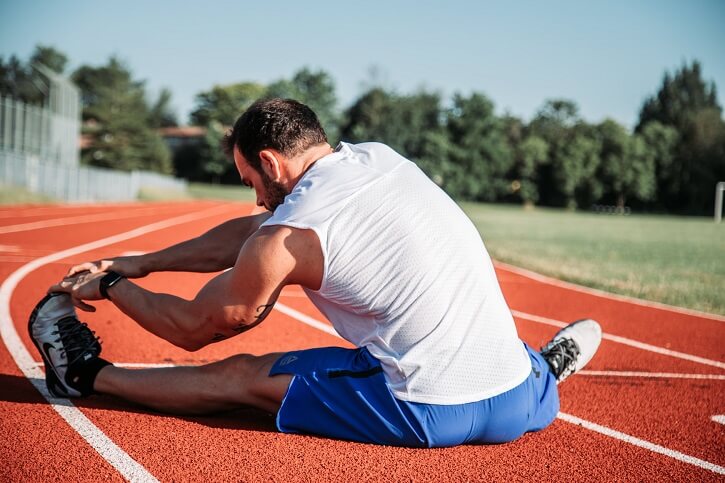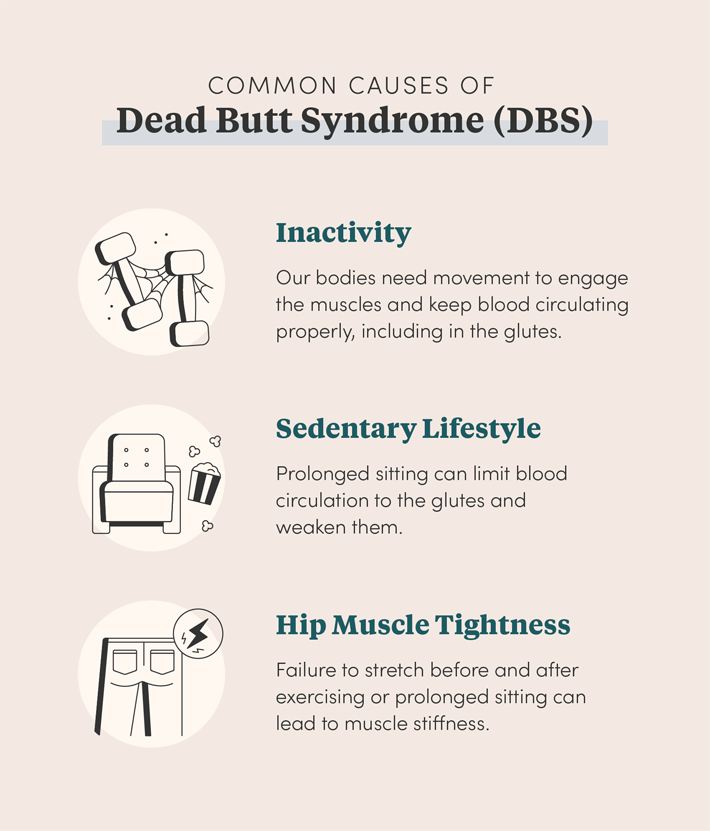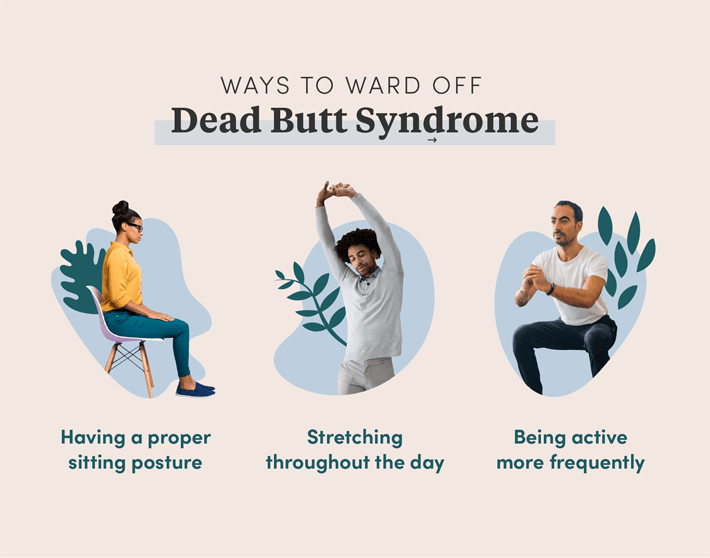Now that so many of us are working from home, we need to switch up our routines a bit to stay healthy. When you’re working in a traditional office setting, there are more opportunities to take mini desk breaks and move between work tasks.
But a lot of remote workers spend more time stuck in their desk chairs. What’s the consequence of this? We’re developing gluteal amnesia — more often known as Dead Butt Syndrome (DBS).
What is Dead Butt Syndrome?
It’s no secret that standing is better for your body than sitting. So what happens when we start sitting at our desks significantly more? Our gluteal muscles start to weaken.
And this doesn’t just affect your glutes! Glutes connect to many other muscle groups, so DBS can lead to back pain, hip pain, stiff joints, and numbness.
People are prone to DBS when they’re not moving much, like sitting at a desk all day. Even if you’re an active person, you could risk developing DBS if you’re not stretching properly before and after exercise.
I Think I Have Dead Butt Syndrome. Now What?
If you’ve been experiencing these symptoms don’t panic. With some simple lifestyle switches, you can alleviate your DBS and reduce your muscle pain.
1. Start Slow
You might be worried about your workout routine, but if you’re experiencing DBS then now isn’t the time to ramp up the intensity.
You can do further damage if you jump into an intense workout routine after a long period without exercise. Remember to start small, listen to your body, and build up your endurance over time.
2. Make Lasting Routine Changes
Consistency is the key to fighting your DBS and keeping symptoms from returning. Make changes that you’ll be able to keep up with long-term.
Simple changes, like working stretching breaks into your day, are going to be more helpful than dropping more drastic measures after a short amount of time.
3. Improve Your Circulation
DBS is, ultimately, a circulation issue. Consistent walking, massages, elevating your legs, and drinking lots of water can all help improve your circulation.
How Do I Prevent Dead Butt Syndrome?
It’s simple to stave off BDS symptoms, you just need to be mindful of your daily habits. Here are some actionable ways to prevent BDS.
1. Sit Properly
Everyone talks about how important proper posture is. Unfortunately, they’re right! BDS can happen when you’re sitting for long periods each day and how you’re sitting makes a difference.
Ideally, you should keep both your feet on the floor, keep your gaze up (so elevate that laptop or computer screen!), and keep your elbows at an angle of 90 degrees or more.
Investing in a good office chair and some ergonomic tools makes it easier to maintain proper posture with as much comfort as possible.
2. Take Active Breaks
It’s tempting to use your breaks to catch up on your phone, but active breaks are essential to supporting your health and productivity. Take a quick walk and make sure you’re moving during your breaks to prevent BDS symptoms.
3. Focus on Your Glutes
Because BDS is also due to gluteal weakness, you should consider targeting your glutes more often in your workouts. Strengthening your glutes will help the surrounding muscle pain that you might feel in your back or legs.
Ultimately, some simple lifestyle switches can prevent and help treat your BDS. Work from home is here to stay, so BDS is on the rise.
For more information about BDS and what you can do to keep your glutes strong, check out the graphic from Hello TUSHY below.








